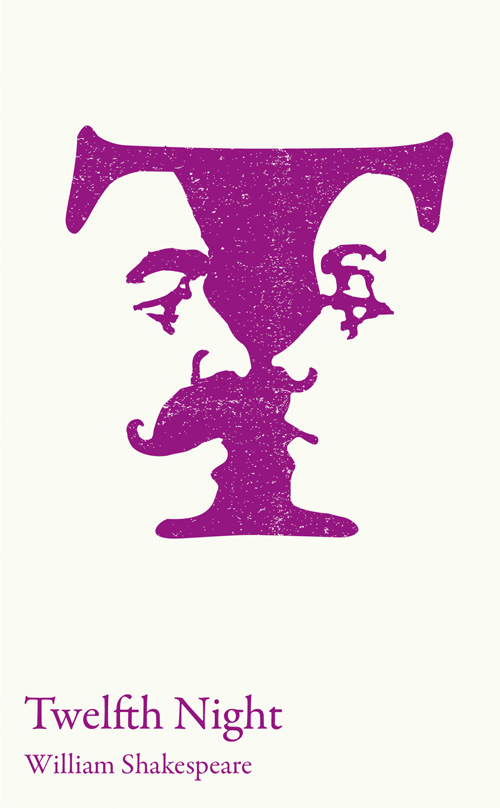We are living in a time when identity, particularly gender identity, has become a highly topical issue. How we identify others and identify ourselves has become a key concern, with whole websites established to help people. It’s constantly in the news, from Billy Porter’s appearance on the Oscars red carpet in a gown to teenager Jaden Smith wearing a dress to a high school prom accompanied by non-binary actor Amandla Stenberg.
It may be surprising that none of this is actually new, and that Shakespeare is exploring many of the same ideas and confusions in Twelfth Night. It’s a play where a woman dresses as a man and, as a man, falls in love with another man while being the subject of another woman’s affection. It’s complicated, as Shakespeare exploits the comedy of the play’s twists and confusions. At the centre of it all is disguise, in itself a theatrical idea, with a focus on costume and appearance. The idea of costume is developed in the play, but Shakespeare takes it further, looking at disguised feelings, hidden by necessity and convention.
Let’s look at how this begins, when Viola is washed up on Illyria’s shore in the second scene of the play. When she speaks to her rescuer, the Sea Captain (2.3 ll.47-61), it is interesting to note that Viola first trusts the Captain because he is not disguised; she believes his ‘fair behaviour’ is a sign of his ‘mind that suits/[… his] fair and outward character.’ This implies that a lack of disguise is trustworthy and that disguise is therefore possibly treacherous, yet Viola offers to pay him ‘bounteously’ if he will help to ‘Conceal me what I am’. In this speech, Shakespeare establishes the paradox of Viola’s position – disguise suggests dishonesty, yet she gains access to Illyrian society through disguise. It is perhaps her consciousness of this paradox that leads to her uncertainty about her plan’s ending – ‘What else may hap to time I will commit’ – she is no longer in control and time, or fate, takes over.
That paradox leads to much of the play’s humour, but also its poignancy. Students will recognise that the dialogue between Viola, now Cesario, and Orsino, is charged by the audience’s knowledge of the disguise. There is humour and uncanny judgement, for example, in Orsino’s comment on Cesario’s lips, which are ‘smooth and rubious’ and that his voice and manner are ‘semblative a woman’s part’ (1.4 ll.32-34). Viola later acknowledges that disguising one’s feelings can be destructive, referring to ‘concealment’ as ‘a worm i’ th’ bud’ (2.4 ll.111), and the humour of these scenes is given a frisson by the sense of an attraction growing between the two, even though Orsino thinks he is talking to another man. The possibilities of cross-dressing, androgyny, heterosexual and homosexual attractions are all parcelled up together.
It’s worth students looking in some detail at Viola’s soliloquy at the end of Act 2 Scene 2 in order to see how Shakespeare’s language shapes the audience’s response to these issues. They might consider the implications of her statement that her appearance has ‘charm’d’ Olivia and of her description of Olivia’s loving feelings as ‘cunning’. As with the Orsino scene, this one is given an extra edge by Shakespeare’s toying with a same-sex relationship: Olivia doesn’t realise it, but she has fallen for another woman. But, as Viola says, ‘Poor lady, she were better love a dream’, so the possibility of the relationship is only momentarily suggested before being dismissed. Students might also note the antitheses (the balance of the love triangle with ‘My master… And I… And she…’) and Viola’s two gender identities (‘As I am a man… As I am a woman…’) (2.2 ll.32-37). There is a sense here that disguise is out of control: it is a ‘wickedness’ which only time can ‘untangle’.
Looking closely at this speech is a good starting point for further exploration of Shakespeare’s use of disguise in the play.
Five key discussion points
- Why is Malvolio’s costume of yellow cross-gartered stockings another key use of disguise?
- Feste dresses appropriately for his role as Sir Topas, but why does he need costume when Malvolio cannot see him?
- Sir Toby Belch constructs identities for both Cesario and Sir Andrew as fearsome duellers for comic effect – neither wants to play the role assigned to them.
- Why, do students think, does Viola not appear in her ‘maiden weeds’, dressed as a woman, at the end of the play?
- What difference would it have made in Shakespeare’s theatre that Viola and Olivia would have been played by boys?
By Noel Cassidy
Noel worked on the detailed introduction to the Twelfth Night edition for GCSE-level students; part of the Collins Classroom Classics range.
Noel Cassidy has been teaching for over 30 years, with experience in schools in the UK and New Zealand and is currently in charge of A Level English at St Albans School. He has been assessing A Level English Literature for over 25 years, with senior positions in charge of coursework and examinations for UK and international examination boards, and has trained teachers in teaching, learning and assessment in several locations across the world. He has written for emagazine, English and The Times Educational Supplement. He contributed to Teaching English 11-16 (Continuum) and edited the Cambridge International AS & A Level Literature in English Students’ Book (Collins).




